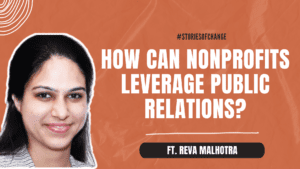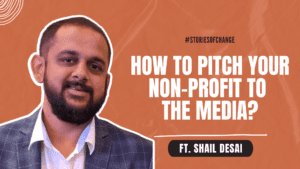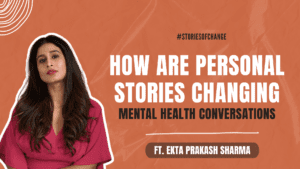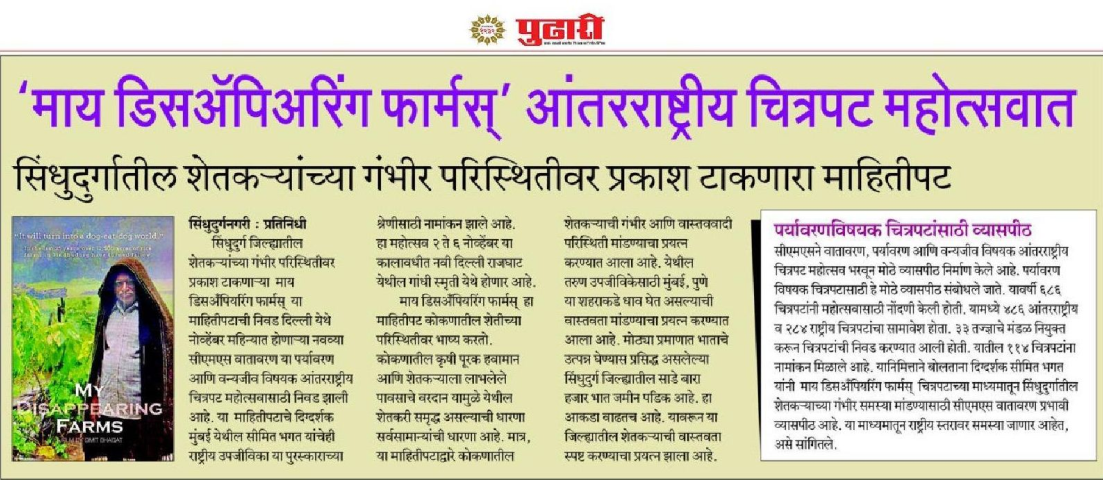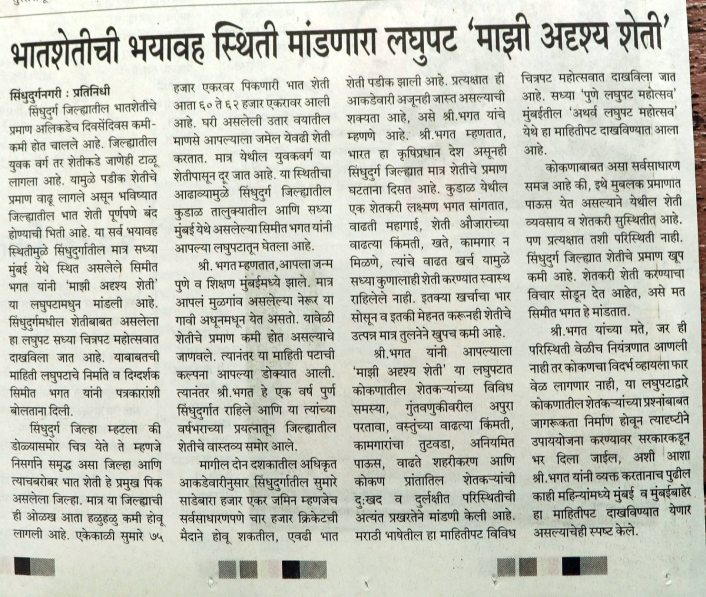In this episode of Stories of Change, Simit Bhagat, Founder of Simit Bhagat Studios and Vivek Singh, a Development Consultant and Co-Founder of AVISI chat about how proposal writing is a skill that nonprofits need to learn to master to raise resources effectively. Vivek shares some useful insights that nonprofits could use to improve their quality of proposals.
Vivek is a development practitioner and researcher based out of New Delhi. He specialises in program design, monitoring and evaluation and organisational development. He has over 15 years of experience of working with organisations including Azim Premji Foundation, Tata Trusts, Indian Institute of Foreign Trade, National Institute of Educational Planning and Administration among others.
Transcript of the Episode:
Simit: Thank you so much, Vivek, for joining me in this podcast.
Vivek: Thank you, Simit. Thank you for inviting me to this podcast.
Simit: Proposal writing is very important for any nonprofit or a social organisation. This is the most crucial thing that any organisation needs to have. Whenever they are approaching any potential corporate donor and or an individual donor as well, it can give a sense of clarity on what kind of impact an organisation has had in the past and what they actually want. So for any donor and any investor, this gives an overall sense of where the organisation stands today. So today in this podcast, we’re going to cover things about proposal writing.
So Vivek, can you give us a sense of what a good proposal entails and why proposal writing is crucial for any organisation?
Vivek: In my experience, if we look at the entire proposal writing process, I believe that in this field, we need to consider proposals in two ways. One is when we write a new concept, either initially or for bidding organisations that approach new donors or individuals. The second is when we already have existing projects, and we want to expand our scope, approaching big donor agencies.
In these cases, I feel that proposals should be viewed in other dimensions. Whenever an organisation provides a proposal, there should be certain basic elements. A good proposal will convey what our initiative is, why we are doing this work, what our value system is. Anyone reading that proposal should understand what the organisation’s culture is, what the organisation does, and what experience the organisation has. The proposal should communicate what it aims to prove and what activities it wants to carry out on the actual ground.
“Anyone reading a proposal should understand what the organisation’s culture is, what the organisation does, and what experience the organisation has.”
Moreover, it is essential to determine whether the organisation proposing the project has the capacity to implement it. It is crucial to examine whether there is a systematic, thoughtful plan in the proposal that demonstrates the organisation’s ability to execute the proposed project. This also provides an opportunity for the organisation to represent itself effectively, explaining to anyone why it is undertaking this work.
Simit: So what are those five important things that should be part of a proposal?
Vivek: So, the first thing I think is that an organisation should have a story related to its culture and values. This means that whenever we present a proposal to any donor or anyone, we must present the trajectory of the organisation’s growth and the entire journey of the organisation.
The second crucial aspect is understanding the organisation’s experience. Experience here means whatever programs or projects they have undertaken so far, how long has the organisation been doing those activities, and what components it has implemented.
The third important aspect, in my opinion, is understanding the organisation’s structure. What is its organisational chart? How does the organisation function? What is the governance system of the organisation? How present is the organisation in the community, and what impact have they made? This is an essential structure or framework of the entire organisation, which is necessary for anyone to understand, whether it’s an agency, people, or a donor.
Another aspect that I think is quite important is how the organisation operates. That is, what are its methods of implementation? What is its theory of change? What does it believe in? What is its approach on the ground? Does it plan systematically before working on something, or does it randomly start a project? So, a conscious effort is being made to know whether the organisation is putting in a systematic effort or not, and it is quite important for anyone to understand this about the organisation.
Another aspect is when they talk about an existing program or when they propose, what is their framework? Or what is their plan? Whatever they propose, they want to see how it materialises on the ground, and what kind of resources they need. I mean, this is also a very important aspect. Generally, when we write or give any proposal, we only talk about monetary resources, like our budget is this, and we need this much money so that we can implement this program. But it’s not just about monetary resources; we also need to consider human resources, what can be the capital investment, and we need to pay attention to this aspect as well. It’s important to consider how we will build the capacity of our team. So, if we involve all these aspects in a proposal, it becomes a very impactful proposal.
Simit: So, my next question was about the specialised things you mentioned, like impact assessment, risk assessment, creating M&E, or the Theory of Change. Many grassroots-level organisations might not have heard about these things, or if they have, they might not know how to do them. For any organisation, it feels good to hear about these, and they might think, ‘Yes, we should have this, and we should have that.’ But the key question for any organisation is, do they have the capacity to do these things? And if not, how can they build it?
So, for any organisation, it’s good to hear that these things should be there, but they might not know how to do it. It’s a bit of a tricky situation because if you want to hire an external expert to do all these things, to write a good proposal, you need to spend resources. However, many organisations don’t have the resources, and that’s why they are looking for funding. So, how can an organisation manage this?
Vivek: This is indeed a very insightful question, and I have been thinking about it. You rightly pointed out that this is a chicken and egg situation. If an organisation does not consider proposal development as a long-term investment, it might not allocate the necessary resources.
While we may not say it is a heavy investment, it is an investment opportunity. We should view the proposal writing process not as a cost but as an investment. It’s similar to when you establish an organisation: you create an office, build a brand image, and create a website. The cost is implicit, but the long-term impact you see, like increased visibility, is an investment.
“We should view the proposal writing process not as a cost but as an investment.”
Similarly, small grassroots organisations generally do not give much importance to proposal writing, partly because they may lack understanding or exposure to how crucial it has become in today’s context, especially after the COVID situation.
Since the amendment of CSR in 2014 and given the correct context, all charitable organisations or traditionally donor organisations have become very active players. They know what they are doing. In this context, they want to make partnerships with grassroots organisations.
So, if you want to engage in active partnerships, it becomes crucial for your organisation to present itself. The proposal provides you with that opportunity. A good proposal gives you the opportunity to represent your organisation well. In this context, after the COVID scenario, it has become very important to see how things are happening. So, an organisation needs to manage this effectively. It requires a long-term investment strategy to develop in this aspect, and I believe organisations should pay attention to this.
Simit: According to you, what challenges do they face? I mean, why do they come to you instead of doing it themselves?
Vivek: Generally, the most focus is on program implementation, bringing programs, and mostly they don’t have internal capacity to focus more on proposal writing. What happens is that when a project ends, they start preparing for the proposal of another project.
So it’s correct that, given the context, in rural areas or hard-to-reach areas where organisations are working, their capacity is limited to writing impactful proposals. For instance, in our organisation, we identify such organisations that have implemented impactful programs, and we support them in writing good proposals.
Here, we engage in handholding support with the organisation, gather different types of information, and tell them to focus on their work while we collaborate to develop impactful proposals. In this way, these organisations get a better chance to represent themselves more effectively.
Also, a large number of proposals that ground-based organisations submit show a common threat, indicating that proposals are generally not well-researched. I mean, when we provide background information on anything, there’s a skill where, whenever we propose something, we need to gather information from different sources. It doesn’t occur to them how whatever they are proposing, the organisation generally misses out on understanding.
“A large number of proposals that ground-based organisations submit show a common threat, indicating that proposals are generally not well-researched.”
The second limitation of proposals is that generally many proposals are written emotionally rather than providing practical or objective views. These emotional proposals are written by organisations in a way where there is no effective information, and the donor cannot comprehend whether the proposal should be given in charity or for active participation. So, a clear stark difference needs to be seen.
Thirdly, if we say the limitations that are frequently observed, is that a large number of proposals are not well-structured. There is no logical flow from one section to another. Logically arranged material is not present in it; statements are made here and there without any connection. What happens is that most of the proposals, because they are in small organisations, are not curated to show donor agencies what their requirements are. They apply the standard proposal, which might be old, because it doesn’t require conscious effort. In this way, they have a generic type of proposal, and it lacks specific information.
Another information gap that I observe is the organisation’s capability, which is not mentioned anywhere in the proposal. How will they implement whatever they are proposing? They do mention the organisation’s experience in such work, but in the current context, what its capability is and how it will implement its program remains unclear, especially in terms of the cost of the cases.
Another thing that I quite frequently emphasise is that whenever a proposal is submitted, there is a time limitation mentioned, like we will do this for three years or four years or five years. But it is never mentioned what will happen to the project after these three years, meaning sustainability or the future path is not mentioned. The sustainability part is generally missed out by the organisation, creating a doubtful situation because the donor, who is an investor, looks at all aspects. For them, visualising what will happen next in the project becomes a bit difficult, and this cannot be derived from the proposal.
“The sustainability part is generally missed out by the organisation, creating a doubtful situation.”
And there are some small aspects that I have mentioned before, like how you are doing risk assessment, what risk mitigation will be, which is not part of the proposal. Cost-benefit analysis is not provided either because generally, donors treat the grant as an investment, and they cannot figure out the return on that investment. So, we cannot articulate that part in the proposal.
Simit: So Vivek, just to clarify, when you say investment you don’t mean financial returns right? You mean return in terms of impact on the community or overall social impact right?
Vivek: Yes, yes, we are talking about what is the social investment return. Generally, we express it in our colloquial language because it’s a kind of an investment. We don’t talk much about its monetary return; instead, we focus more on the social return.
Simit: Typically, when any organisation sends a proposal, along with that, there are other things that should be accompanied, such as the annual report. Besides the proposal, what are the other things that should be sent along?
Vivek: I think the proposal becomes an important aspect whenever you approach any donor agency or anyone else. Another aspect that I find crucial is that while the proposal is a lengthy document or the annual report is a detailed document, I believe there should also be a short pitch deck for an organisation. This can effectively communicate an organisation’s journey to anyone. If possible, short videos of the organisation’s work, one minute, two minutes, or three minutes long, can be quite important to showcase its impact.
Another aspect could be that when an organisation sends a proposal, if they have worked in the field, an impact report or an external evaluation report, even if it’s short, should be included. Additionally, if the organisation has a website, sending a good impression of it is essential. This helps create a positive image for a donor agency or anyone reviewing the proposal, giving them the opportunity to explore all the information about the organisation in one document file. I think this will be important.
Simit: I think the suggestions you’ve given and the insights you’ve shared are quite valuable. I believe the organisation will benefit from this, and I hope the sector continues to grow in this way. Grassroots level organisations play a very important role in society. We especially saw this during the time of COVID. At the end of the day, whether it’s a large corporation or a big government machinery, when it comes to giving vaccines or convincing people, we had to go to these grassroots level organisations. Whether we feel they are ready or not, despite facing many challenges, they were crucial during the most important times.
Thank you so much for sharing your thoughts Vivek, it was wonderful to speak to you.
Vivek: Thank you, Simit, thank you.

